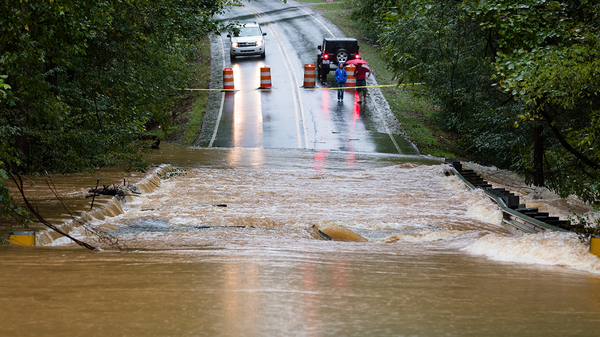
We’ve noted six significant findings from the data presented in Figure 2.
A key characteristic of the data on property and crop damage is the spikiness. In a few especially intense years, catastrophic events created a large amount of damage, whereas other years saw much less damage. This irregular pattern of damage across years contrasts with the frequency of events from 1995 to 2022 (Figure 1)—the amount of damage from weather events tends to be much more volatile from year to year than the occurrence of extreme weather events.
Hurricanes and flooding drove most of the spikes in property damage. The largest losses were caused by Hurricanes Harvey, Irma, and Maria in 2017; Hurricanes Katrina and Rita in 2005; and flooding associated with Superstorm Sandy in 2012.
Crop damage overwhelmingly was caused by drought, except for a couple of years in which hurricanes caused significant crop damage. For example, Hurricane Michael caused over $4 billion in crop damage in 2018, primarily in Georgia and Florida.
Wildfires generally cause less property damage than other extreme events, but the spike in 2018, which mainly is associated with the Camp Fire in Paradise, California, shows the large potential impact of fires. When wildfires hit developed areas, they tend to be extremely destructive. The damage from these wildfires raises concerns for population growth in areas where human development borders wildlands, given that these areas tend to be more vulnerable to wildfires.
The number of deaths from storm events is more consistent across years (i.e., less spiky) than property and crop damage. In almost all the years we evaluated, heat and winter weather were responsible for the most deaths. Heat-related deaths have shown an alarming upward trend in the past decade, corresponding to a similarly steady increase in the number of heat-related events (Figure 1). The US Centers for Disease Control and Prevention, a government agency that compiles data on deaths from multiple causes, shows even higher numbers of deaths from heat and heat-related illnesses than the NWS. The highest number of heat-related deaths in the United States on record occurred in 2023, according to the agency.
Tornadoes do not account for a significant share of damage and deaths in most years, but 2011 was the second-most severe year for tornadoes in US history. In that year, 2,595 tornadoes were reported, and 567 deaths and $7.9 billion in property damage were attributed to tornadoes.
